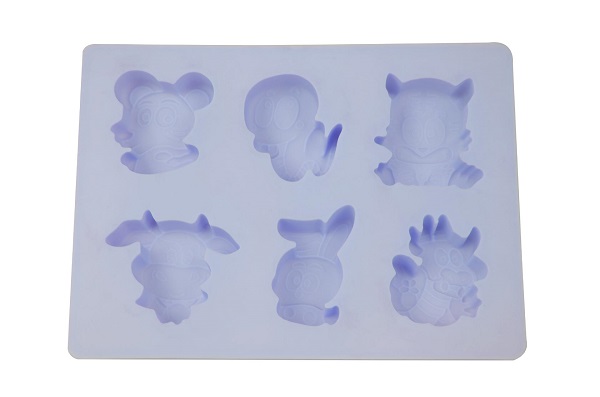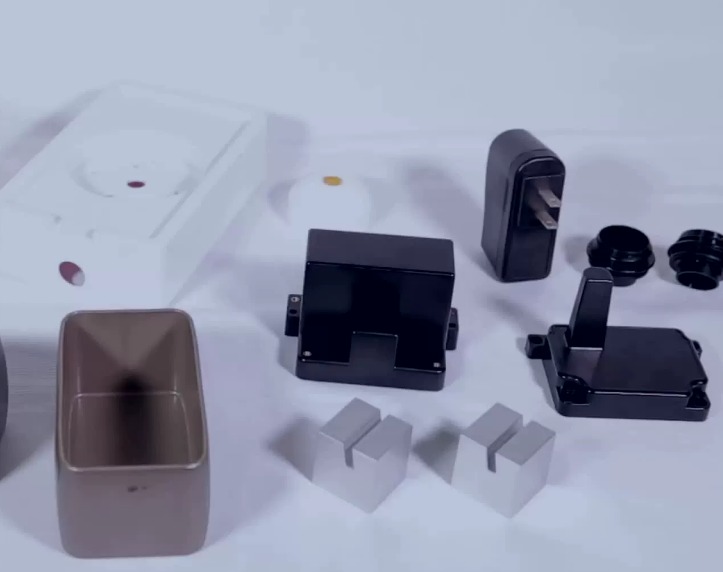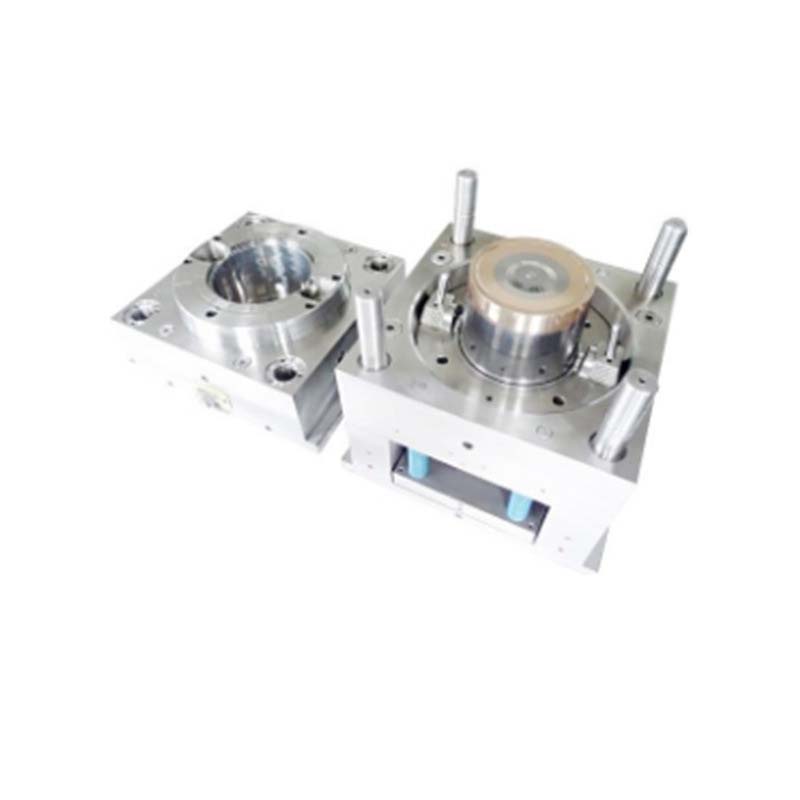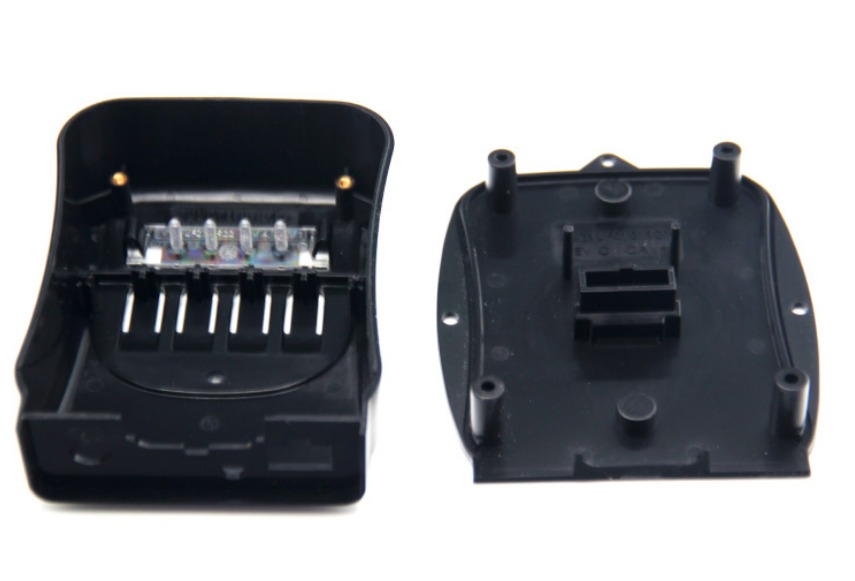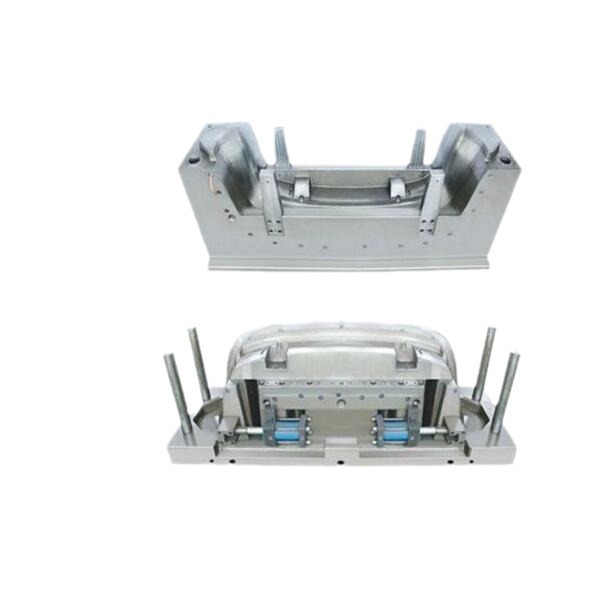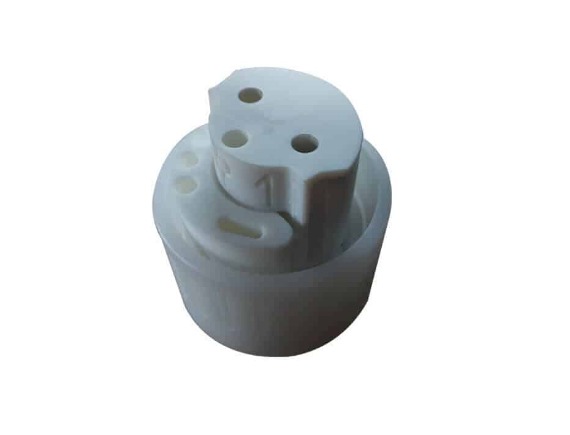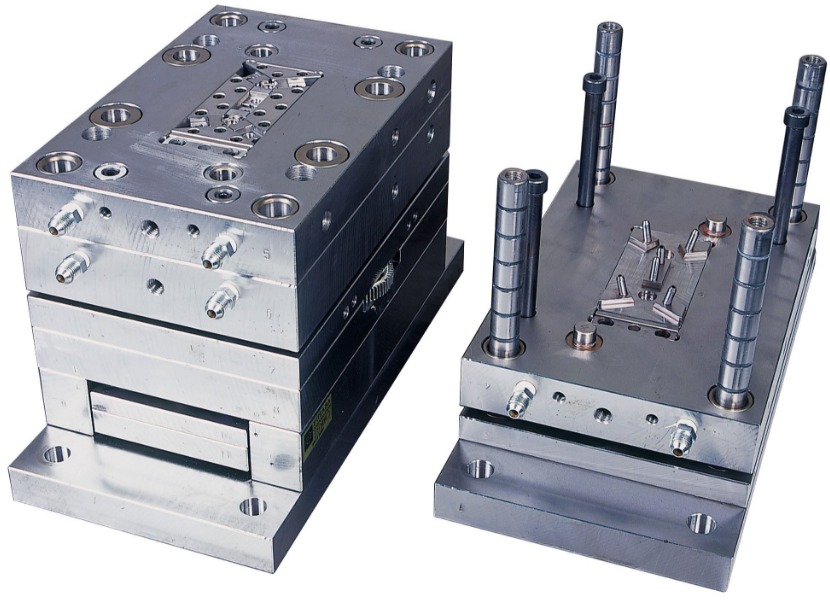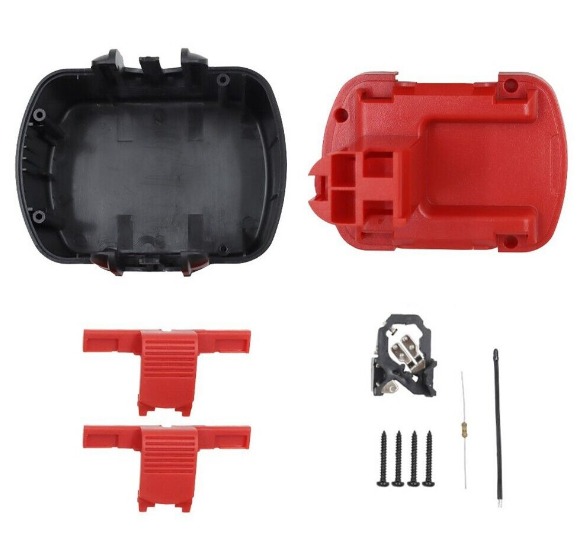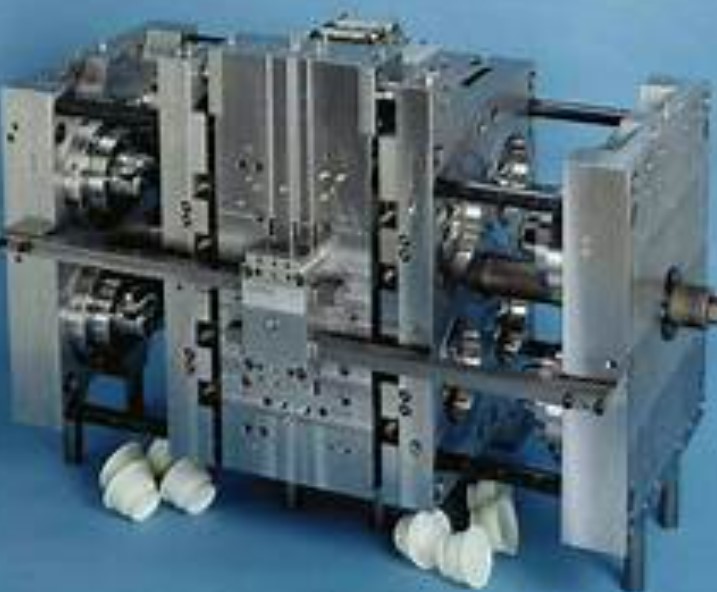What is a PVC Mold
A PVC mold, short for Polyvinyl Chloride mold, is a specialized tool used in the manufacturing process to shape PVC materials into various products. PVC, a widely used thermoplastic polymer, is transformed through the mold under specific conditions of heat and pressure. This process allows for the creation of a vast array of items, from simple household products to complex industrial components.
The basic principle behind a PVC mold is quite straightforward yet highly effective. First, the solid PVC material, which often comes in the form of granules or pellets, is fed into an injection molding machine. The machine heats the PVC to a molten state, making it malleable. This molten PVC is then forcefully injected into the mold cavity, which has been precisely designed to the desired shape of the final product. Once inside the mold, the PVC cools and solidifies, taking on the exact shape of the cavity. After the cooling process is complete, the mold opens, and the newly formed PVC product is ejected.
In industrial production, PVC molds play a crucial role. They are the key to mass - production of high - quality PVC products with consistent dimensions and features. For example, in the construction industry, PVC molds are used to manufacture pipes, fittings, and window profiles. These molds ensure that each pipe has the correct diameter and wall thickness, and each window profile has the right shape and size for easy installation and optimal performance. In the consumer goods industry, PVC molds are used to create toys, packaging, and various household items, enabling manufacturers to produce these products in large quantities at a relatively low cost. Without PVC molds, the efficient and cost - effective production of these diverse PVC - based products would be extremely challenging, if not impossible.
Types of PVC Mold
There are several types of PVC molds, each with its own unique characteristics and applications. Understanding these different types can help manufacturers choose the most suitable mold for their specific production needs.
1. Injection PVC Molds
Injection PVC molds are widely used in the manufacturing industry. The working principle of injection PVC molds is as follows: First, the PVC material in granular or pellet form is fed into the hopper of the injection molding machine. The machine then heats the PVC to a molten state, usually within a temperature range of 160 - 200°C, depending on the specific type of PVC resin. Once molten, the PVC is forced, under high pressure (ranging from 50 - 150 MPa), through a nozzle into the closed mold cavity. The mold cavity is precisely designed to the shape of the final product. After the cavity is filled, the PVC cools and solidifies inside the mold. Once cooled, the mold opens, and the finished PVC product is ejected by ejector pins.
These molds are suitable for a wide range of products, such as small plastic toys, electrical components, and precision - engineered parts. For example, in the production of small plastic toys, injection PVC molds can create highly detailed and complex shapes, including moving parts like wheels on toy cars or articulated limbs on action figures.
Compared to other types of molds, injection PVC molds offer several advantages. They can produce products with high precision, with dimensional tolerances as low as ±0.05 mm in some cases. This makes them ideal for products that require tight tolerances, such as electronic components. Additionally, injection molding is a relatively fast process, with cycle times that can range from a few seconds to a couple of minutes, depending on the size and complexity of the product. This high - speed production capability allows for mass - production, reducing the per - unit cost significantly.
2. Blow PVC Molds
The 成型过程 of blow PVC molds involves several steps. First, a parison, which is a tube - like piece of molten PVC, is formed. This can be done through extrusion or injection processes. The parison is then placed inside a split mold. The mold closes around the parison, and compressed air is blown into the parison through a blow pin. The air pressure forces the molten PVC to expand and conform to the shape of the mold cavity. After the PVC cools and solidifies, the mold opens, and the finished product is removed.
Blow PVC molds are suitable for products such as bottles, containers, and hollow objects. For instance, in the production of PVC bottles for household chemicals or food packaging, blow molds can create containers with a smooth surface, uniform wall thickness, and the ability to hold various volumes, ranging from small sample - size bottles to large - capacity storage containers. The wall thickness of the products made by blow PVC molds can be precisely controlled, usually within a range of 0.5 - 3 mm, depending on the requirements of the product.
3. Extrusion PVC Molds
Extrusion PVC molds work by continuously feeding PVC material into an extruder. The extruder heats the PVC to a molten state and then forces it through a shaped die. The die determines the cross - sectional shape of the extruded product. As the molten PVC passes through the die, it cools and solidifies, maintaining the shape imparted by the die. This process is continuous, allowing for the production of long - length products.
These molds are primarily used in the production of Pipes and profiles. In the construction industry, extrusion PVC molds are used to manufacture PVC pipes for plumbing systems. These pipes can have different diameters, commonly ranging from 16 mm for small - diameter water supply pipes to 500 mm for large - diameter sewer pipes. The wall thickness of the pipes can also vary according to their application, from 1 - 10 mm. For PVC window and door profiles, extrusion molds create complex shapes that provide insulation, weather resistance, and structural integrity. The profiles can be customized with features such as grooves for fittings, chambers for improved thermal performance, and smooth surfaces for a modern aesthetic.
Yigu Technology's View
As a non - standard plastic and metal products custom supplier, Yigu Technology has in - depth insights into PVC molds. We understand that PVC molds are crucial for creating customized products that meet unique design requirements. Our experience in the field allows us to offer comprehensive solutions for PVC mold - related needs.
We pride ourselves on our ability to design and manufacture PVC molds with high precision, using advanced techniques and top - notch materials. Whether it's a complex injection PVC mold for a high - tech component or a blow PVC mold for a unique packaging solution, we have the expertise to handle it. Our team of skilled engineers and technicians works closely with clients to understand their specific product requirements, from the initial design concept to the final production stage.
In addition, we are committed to providing excellent after - sales service for our PVC molds. We offer maintenance guidance, quick response to any mold - related issues, and continuous improvement suggestions to ensure that our clients can achieve maximum production efficiency and product quality. With Yigu Technology, clients can be confident in getting reliable, customized PVC mold solutions that drive their business forward.
FAQs about PVC Mold
1. How often should I clean my PVC mold?
The cleaning frequency of a PVC mold depends on several factors. If the mold is used in a clean production environment and has a low production frequency, cleaning it once every 2 - 3 weeks may be sufficient. This allows for the removal of any accumulated residue that could potentially affect the quality of the molded products. For example, in a small - scale handicraft production using PVC molds with only a few production runs per week, this cleaning schedule can maintain the mold's performance well.
However, in a high - volume production environment where the mold is in continuous use, such as in a large - scale PVC pipe manufacturing factory, the mold should be cleaned daily. The constant injection of PVC material can cause rapid buildup of plastic residues, additives, and other contaminants on the mold surface. Daily cleaning ensures that the mold cavity remains smooth, preventing defects like surface roughness or uneven product thickness in the final PVC products. Additionally, if the PVC material used contains a high amount of fillers or additives, the mold may need to be cleaned more frequently, perhaps every 8 - 12 hours of continuous operation, to prevent the accumulation of these substances and maintain the integrity of the mold.
2. What kind of lubricant is best for PVC molds?
For PVC molds, several types of lubricants are suitable, with each having its own advantages. One common choice is wax - based lubricants, such as polyethylene wax and paraffin wax. Polyethylene wax, with a relatively high melting point (around 100 - 117°C), is effective in high - temperature processing conditions. It provides excellent lubrication between the PVC material and the mold surface, reducing friction during the injection or extrusion process. This helps to improve the flow of the molten PVC, resulting in better - quality products with smoother surfaces. For example, in the production of PVC window profiles where high - speed extrusion is required, polyethylene wax can ensure the efficient movement of the PVC through the extrusion mold.
Paraffin wax, with a lower melting point (57 - 63°C), is also a good option, especially for lower - temperature processing. It is particularly useful in injection molding processes where the mold temperature is relatively moderate. Paraffin wax forms a thin, slippery layer on the mold surface, facilitating the easy release of the molded PVC products. It also helps to prevent the PVC from sticking to the mold, which can lead to product defects or damage to the mold.
Another type of suitable lubricant is metal soap - based lubricants, like calcium stearate and zinc stearate. These lubricants not only provide lubrication but also act as stabilizers for the PVC material. Hard - stearic acid calcium, for instance, has excellent heat - stability properties. It can help to prevent the decomposition of PVC during the molding process, especially at higher temperatures. In addition to lubrication and stabilization, metal soap - based lubricants can also improve the dispersion of additives in the PVC compound, contributing to better - quality products.
3. Can PVC molds be used for high - temperature applications?
PVC molds have limitations when it comes to high - temperature applications. Regular PVC materials typically have a relatively low heat - resistance. Soft - PVC can generally tolerate temperatures up to around 60°C, while rigid PVC can withstand temperatures in the range of 70 - 90°C. In most PVC molding processes, the processing temperature of the PVC material itself is usually in the range of 160 - 200°C for injection molding and a similar range for extrusion molding. However, this is the temperature of the PVC during processing, not the temperature that the mold can continuously operate at in high - temperature applications.
If the application requires a continuous operating temperature above the normal heat - resistance range of PVC, using a standard PVC mold is not advisable. The high temperature can cause the mold to deform, lose its dimensional accuracy, and even lead to the degradation of the mold material over time. For high - temperature applications, materials such as high - temperature - resistant alloys or special engineering plastics with higher heat - deflection temperatures should be considered for the mold construction.
However, if the high - temperature exposure is short - term or intermittent, and the temperature does not exceed the upper limit of the PVC mold's heat - resistance for an extended period, a PVC mold may still be used with caution. For example, if there are occasional spikes in temperature up to 100°C for a few minutes during the production process, proper cooling measures and monitoring can be implemented to ensure the mold's integrity is maintained. But continuous operation at such high temperatures would ultimately damage the PVC mold and affect the quality of the molded products.
